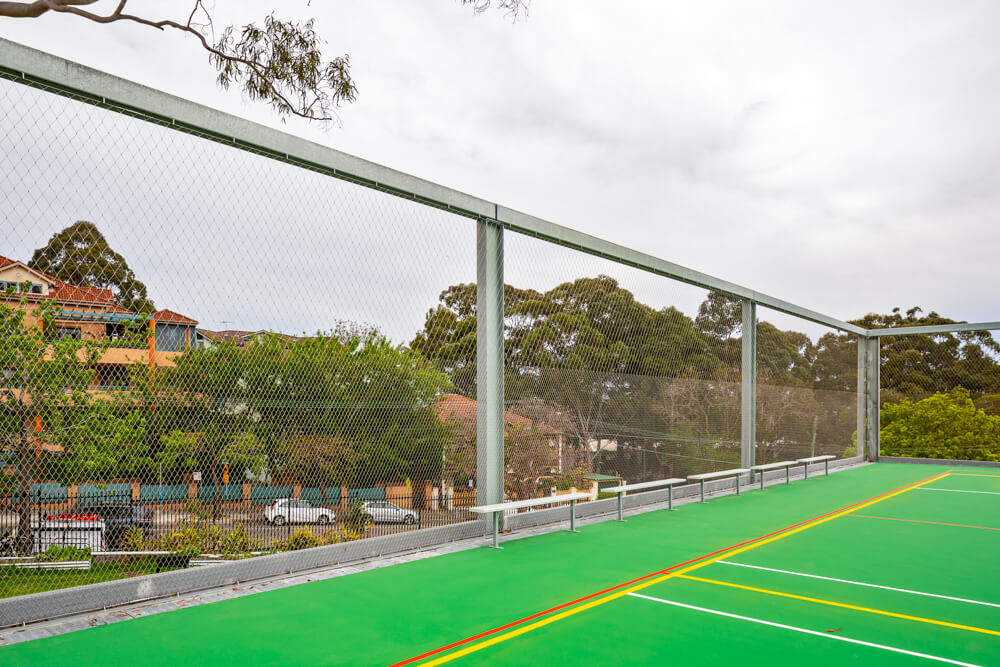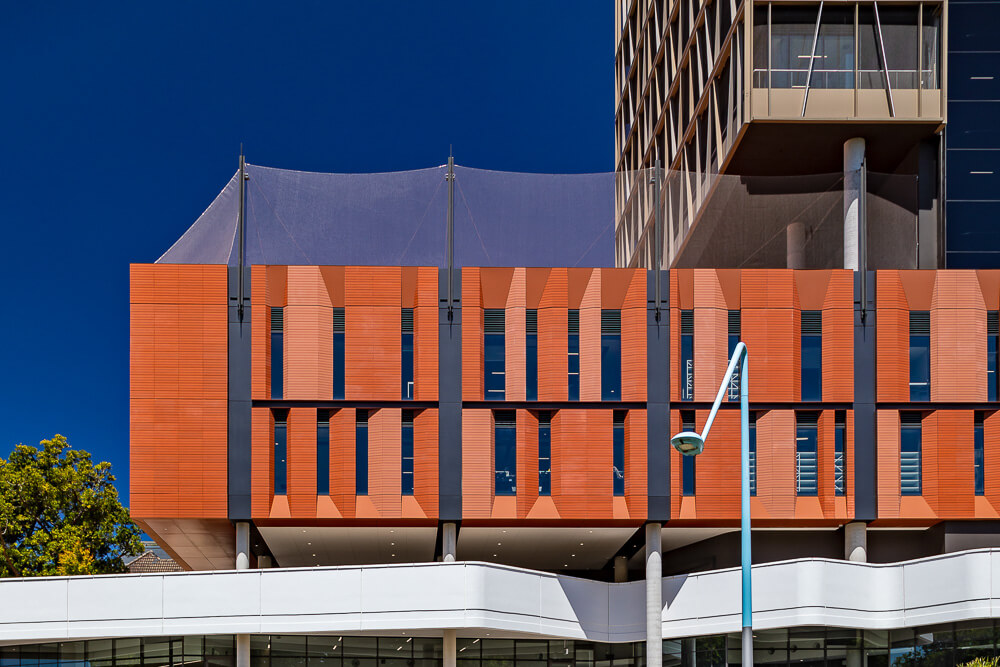-
Australia
Copyright © 2025 Powered by BCI Media Group Pty Ltd
Confirm Submission
Are you sure want to adding all Products to your Library?
Contact Detail

Many vertically-designed schools are installing sports courts on rooftops in order to make the most of the available space. This means fall protection systems for roofs are becoming increasingly important.
Maximising safety for users of these spaces is the top priority. This can be achieved through the use of tensile stainless steel mesh barriers, which not only comply with safety standards, but offer numerous other benefits as well.
Let’s take a look.
The multiple benefits of tensile fall protection systems for roofs
Robustness
Webnet stainless steel mesh is non-corrosive and UV and fire resistant. These features make it an ideal material for rooftop court barriers, which are constantly exposed to the elements. The material can be engineered to meet all codes for loadings and fall protection, enabling it to withstand the impact of large crowds and fast-moving balls.
Clear spans
Webnet stainless steel mesh is a flexible barrier material that generally requires less framing and fewer supporting posts than many other barrier materials. This saves on material costs, and allows for a more elegant and lightweight barrier.
One example is St Patricks College in Sydney which has two rooftop courts. In this project, the clear spans of the barriers allow for greater versatility by providing large spaces that are free of columns.
Customisation
When used for rooftop sports courts, Webnet can be customised right down to the finest detail.
The basketball court at Inner Sydney High for example presented a few challenges for us. There were no existing supports, and the Webnet needed to span 26 metres. Our solution was to design and construct a bespoke post-and-cable system to support the mesh. This made for a barrier that maximises safety while allowing for plenty of bright open space.

Non-climbability
Fall-protection barriers should be as non-climbable as possible. Webnet mesh can accommodate non-climbability by reducing the size of the aperture-opening to prevent handholds and footholds.
This is what happened at the Chatswood Public School redevelopment. For the lower area of the barrier where climbing needed to be addressed, we used 40mm Webnet. But the rest of the barrier above that line is made from 80mm mesh. This approach addressed climbing, while providing additional open area and saving on material volume and cost at the same time.
Sustainability
Sustainability is a priority in many projects these days. This was certainly the case for the Chatswood school. In its redevelopment, the school utilised passive design strategies, with a focus on sustainability and energy efficiency.
Webnet aligns with this focus, being made from an average of 70% recycled content in facilities that use up to 100% renewable energy. It can also be recycled after use.
Community
We find that many schools today focus on creating open and connected spaces that help to create a sense of community, and this includes sporting areas.
Being a transparent and lightweight barrier material, Webnet helps to facilitate this type of open design. Its subtle presence also allows for natural light, airflow and views.
Check our website for other examples of fall protection barriers in educational buildings. If you’d like to discuss a project, please get in touch.




